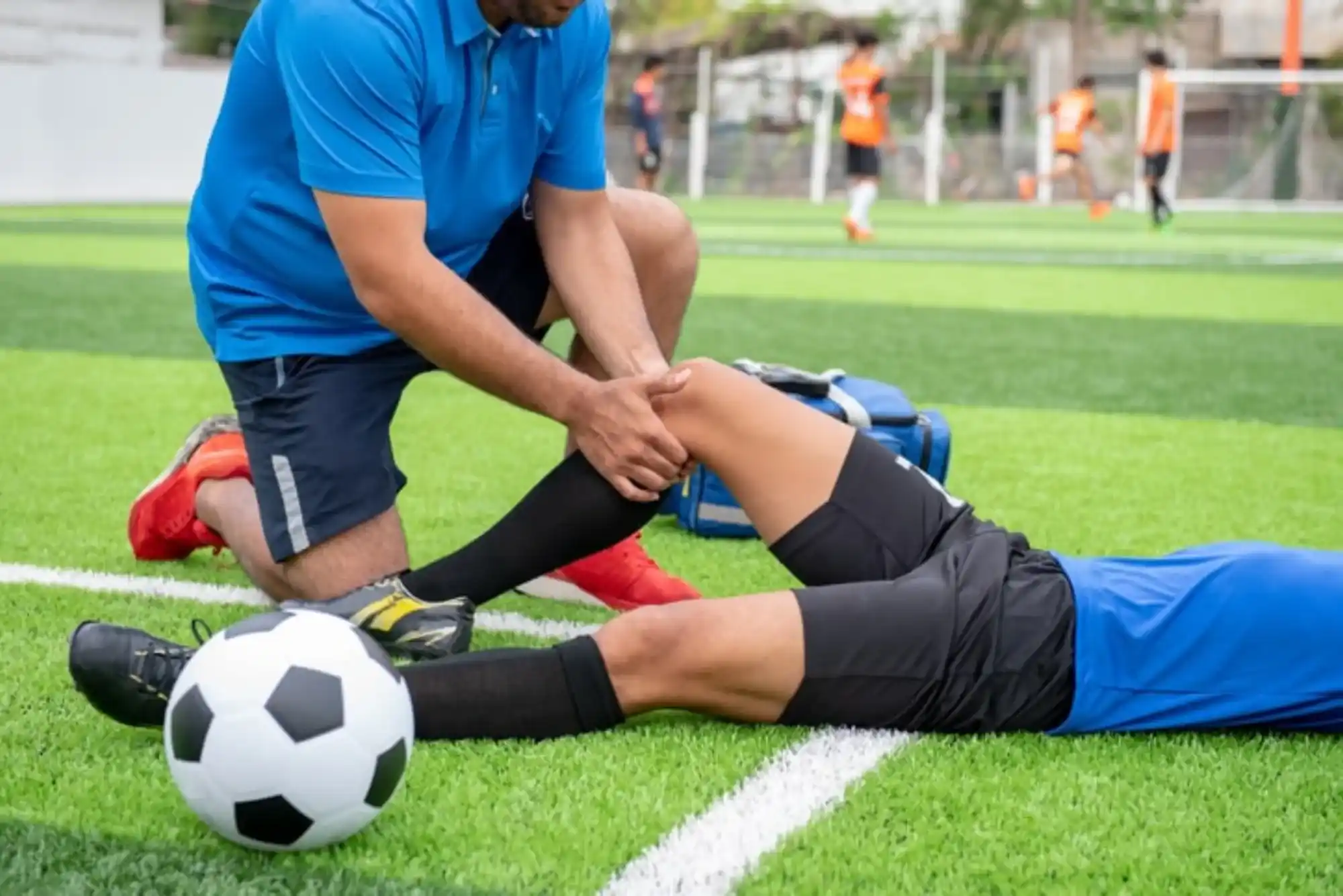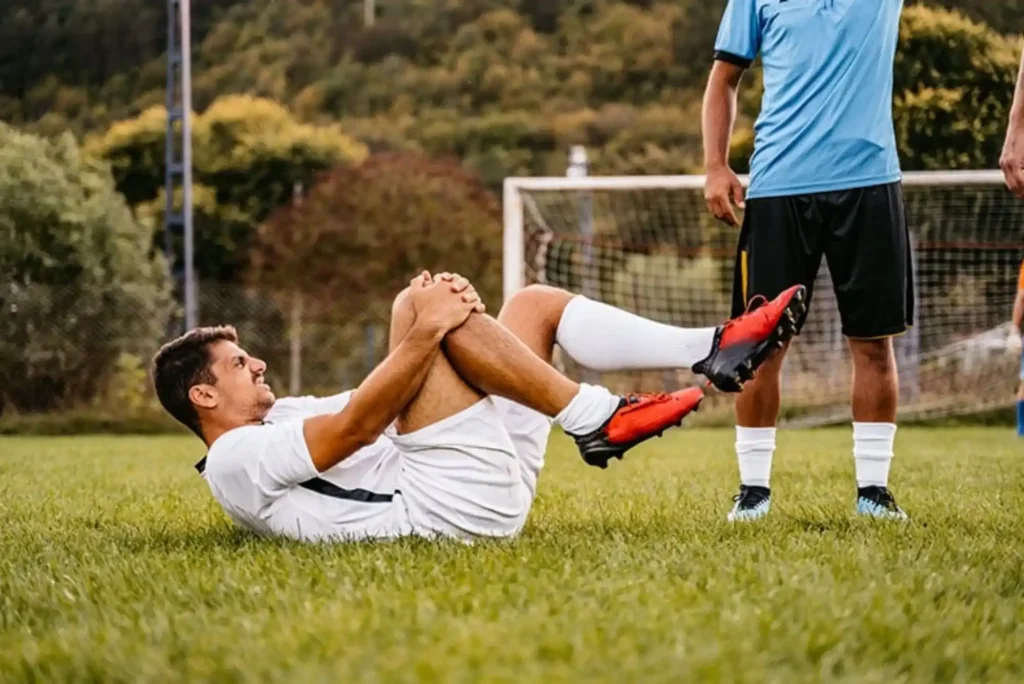Sports hold a significant place in our daily lives, offering not only entertainment but also physical fitness and camaraderie. However, along with the benefits come risks, one of the most prevalent being sports injuries. In this article, we delve into the depths of what constitutes a sports injury, exploring its types, causes, prevention strategies, treatment methods, and overall impact.

What is a Sports Injury?
Sports injuries encompass a wide range of physical ailments resulting from participation in athletic activities. Whether it’s the rigorous intensity of sports like live cricket or the demanding nature of everyday exercise routines, these injuries can manifest in various forms, affecting players and teams alike. From minor sprains to debilitating fractures, the spectrum of sports injuries highlights the importance of understanding their severity and implications.
Causes of Sports Injuries
Several factors contribute to the occurrence of sports injuries. Physical factors such as overuse and traumatic incidents often play a significant role. Environmental conditions, including the playing surface and equipment quality, also influence injury risk. Additionally, behavioral aspects like inadequate warm-up routines and improper training techniques can exacerbate susceptibility to injuries.
Physical Factors
Overuse and Repetitive Motion: Continuous strain on specific muscles, tendons, or joints without adequate rest and recovery can lead to overuse injuries. Activities such as running, throwing, or repetitive swinging motions in sports like cricket can exacerbate this risk, resulting in conditions like tendinitis or stress fractures.
Traumatic Incidents: Acute injuries caused by sudden, forceful impacts or collisions are common in contact sports like rugby or football. These incidents can result in sprains, strains, fractures, or more severe injuries such as ligament tears or concussions. The dynamic nature of sports increases the likelihood of these traumatic events, highlighting the importance of protective gear and adherence to safety protocols.
Environmental Factors
Playing Surface and Conditions: The type of surface athletes compete on can significantly impact injury risk. Hard surfaces like concrete or artificial turf may increase the force exerted on the body during impact, predisposing athletes to injuries such as ankle sprains or knee injuries. Additionally, adverse weather conditions like rain or extreme heat can affect surface traction and player stability, further elevating injury risk.
Equipment Quality and Safety: The effectiveness of sports equipment, including footwear, protective gear, and playing apparatus, plays a crucial role in sports injury prevention. Ill-fitting or worn-out equipment can compromise player safety and increase susceptibility to injuries. Regular equipment maintenance, proper fitting, and adherence to safety standards are essential in minimizing this risk.
Behavioral Factors
Lack of Proper Warm-up and Stretching: Inadequate preparation before engaging in physical activity can heighten the risk of sports injuries. Warm-up exercises and stretching routines help improve flexibility, circulation, and muscle readiness, reducing the likelihood of strains or tears during play. Neglecting these preparatory measures can leave athletes vulnerable to injury, particularly when transitioning from periods of inactivity to intense physical exertion.
Poor Training Techniques and Overexertion: Training errors such as excessive intensity, volume, or frequency without sufficient recovery can lead to overtraining syndrome and increased injury susceptibility. Athletes pushing beyond their physical limits or neglecting proper technique may compromise biomechanical alignment, increasing the risk of musculoskeletal injuries. Emphasizing gradual progression, proper form, and adequate rest periods in training regimens is essential for injury prevention.
Prevention Strategies for Sports Injuries
Prevention is paramount in mitigating the impact of sports injuries. Proper conditioning and fitness are fundamental in preparing athletes for the demands of their chosen sport. Implementing safety measures such as wearing protective gear and adhering to regulations can significantly reduce injury rates. Furthermore, injury prevention programs aimed at educating athletes and coaches about risks and prevention techniques prove invaluable in fostering a safe sporting environment.
Sports Live Cricket
Cricket, often referred to as the “gentleman’s game,” is a globally beloved sport that captivates audiences with its blend of strategy, skill, and athleticism. In recent years, the advent of sports live cricket coverage has revolutionized the way fans engage with the game, offering real-time access to matches and events from around the world. Let’s delve deeper into what makes sports live cricket such a dynamic and compelling spectacle.
Treatment and Rehabilitation
In the event of a sports injury, prompt and appropriate treatment is crucial. Immediate measures following an injury often involve the R.I.C.E. protocol (Rest, Ice, Compression, Elevation) to alleviate pain and inflammation. Seeking professional medical attention from healthcare providers like Amana Healthcare Al Ain ensures accurate diagnosis and tailored treatment plans. Rehabilitation programs aimed at restoring function and strength play a pivotal role in facilitating a safe return to sport.

Impact of Sports Injuries
The repercussions of sports injuries extend beyond the physical realm, affecting athletes both mentally and emotionally. While immediate consequences may include pain and restricted mobility, long-term complications can have enduring effects on an athlete’s career and quality of life. Addressing the psychological toll of injuries is equally important, as athletes navigate the challenges of recovery and potential setbacks.
Sports injuries are an inherent risk of athletic participation, but through understanding, prevention, and proper management, their impact can be minimized. By prioritizing injury prevention strategies, seeking timely treatment, and supporting athletes throughout the rehabilitation process, we can foster a culture of safety and resilience in sports. Let us champion safe participation in sports like live cricket while acknowledging the importance of comprehensive care and support for athletes at every stage of their journey.






